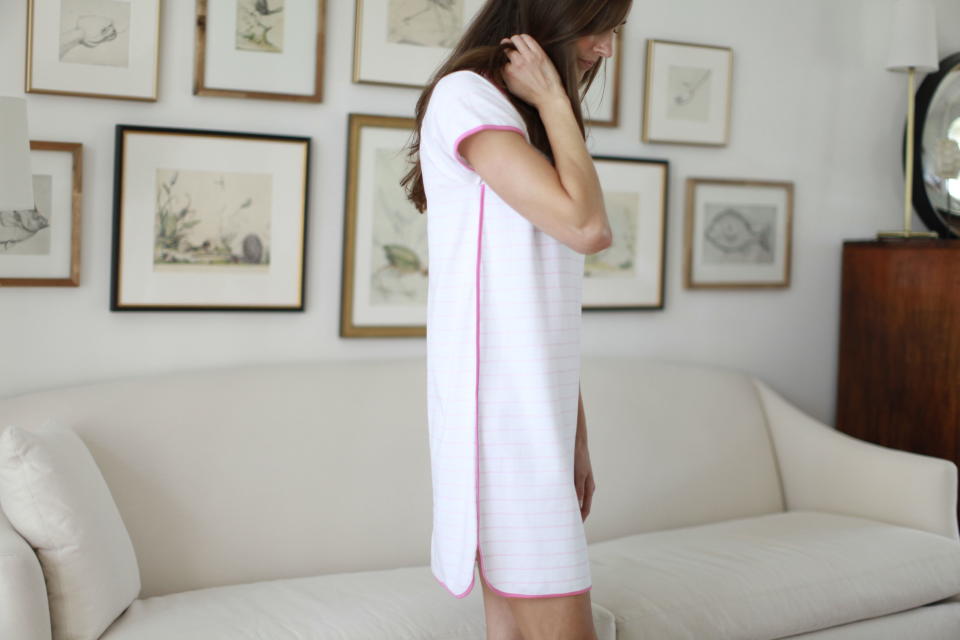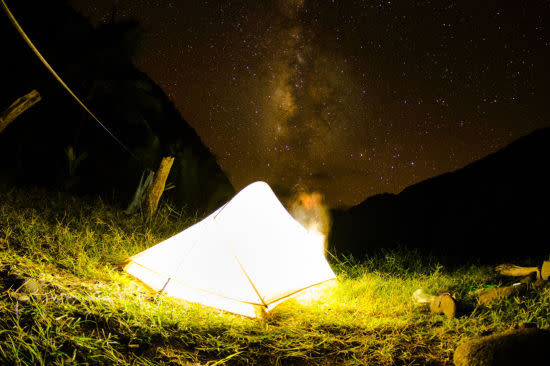Building the Hawaiian Dream House: Coastal View
The September issue of Coastal Living has just hit newsstands, and the “Coastal View” on the back page tells the story of our Hawaii house’s transformation from open land and tent to the one you see below. Slowly but surely, it’s taking shape.

Geranium Stripe, $61*" />
The first time I built a dwelling in Hawaii it involved guy lines, poles, and stakes. The foundation was a sheet of waterproofed nylon ripstop to protect the bottom, which I had to pay extra for. Don't ask about the bathroom—essentially, it was everywhere else. But I was especially proud of a little loop at my tent's ceiling, where I could suspend a light. So, yes, I had a chandelier.
A year before, my wife and I had flown to Hawaii's Big Island from New York City to buy a second house, and somehow had ended up getting land instead. We were filled with first timers' innocence, excitement and gullibility about how long the process of designing, engineering, permitting, and construction would take. Still, the land we'd found—a rolling pasture in former sugar-cane fields that practically spilled into the ocean—had commandeered our attention, even the first time we saw it in the rain, and it stirred something inside us that said this could be home. The land has cows and birds, including snowy owls with 4-foot wingspans, and others which Hawaiians consider 'aumakua, or guardian spirits. In winter, there are whales.
Those were all things that led to our first construction, the one I carried in on my back and which proved to me it was waterproof that second night it was up. It also turned out to be feral pig–proof, in the sense that the 300-pound behemoths I've since spotted charging through our pasture's grasses pleasantly considered it an obstacle, akin to a tree or rock, instead of something they should run across or through, particularly with me inside.

And now we're building, using more traditional materials—concrete, wood, steel, glass (plus a sturdy fence to keep the cows and pigs at a respectful distance), and by the time you read this, the house should be almost ready. I've pitched my tent more times in Hawaii since then, on our land and elsewhere on the island with friends. This time, we're looking forward to actually inviting those friends inside our home—although we'll still ask them to remove their shoes before coming in, as is the Hawaiian custom, and has always been the custom with my little tent.
What's thrilling about the process of building by the beach is pursuing permanence, the idea that no matter the amount of rain or wind or curious creature, our house is designed to stand. The naked land is what first caught our hearts, and my tent is how I first experienced living on it, with all of its sounds, whether it was the wind rushing through towering grasses, or the lowing and grunting and rustling of those creatures outside. But our finished house, with all its comforts and a few indulgences beyond my jerry-rigged chandelier, will be how we express ourselves—because you don't just build a house, but also a life that happens inside and around it, one that takes place in its rooms, on its deck, in its garden and among its trees. Do we have plans for that? You bet. Also we have hopes.
A house starts out on paper. But it exists as much in the realm of expectation as it does in straight lines. You try to imagine your furniture inside—not really how it will look, but what it will be like to sit on those couches, doze in that bed after gazing at the ocean, even slice papayas in that kitchen and let your fingers get sticky as you put the pieces into your mouth. We imagine watching movies, planting fruit trees and flowers, growing older, inviting friends. You build a house, but you imagine life.
When the house is finished, I'll move the tent there, to a shelf in the garage, so it will always be ready for an adventure—ready to stand tall in some deep forgotten valley, or maybe just on our land, on a cliff overlooking the coast. I've pitched it in other places, in other states and countries, but the tent itself seems Hawaiian to me now, as if it belongs to the land. That's what we hope for ourselves.


